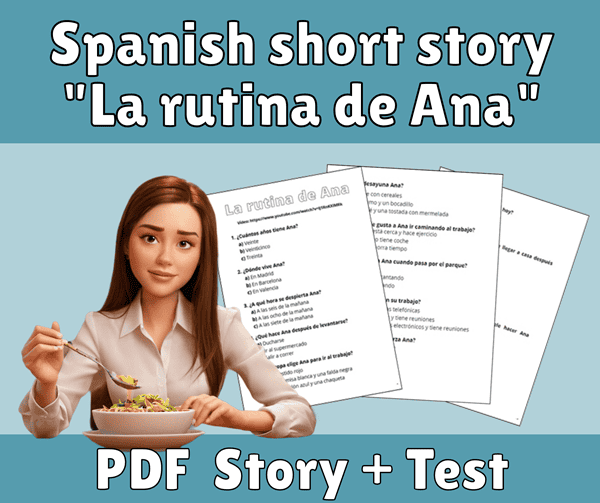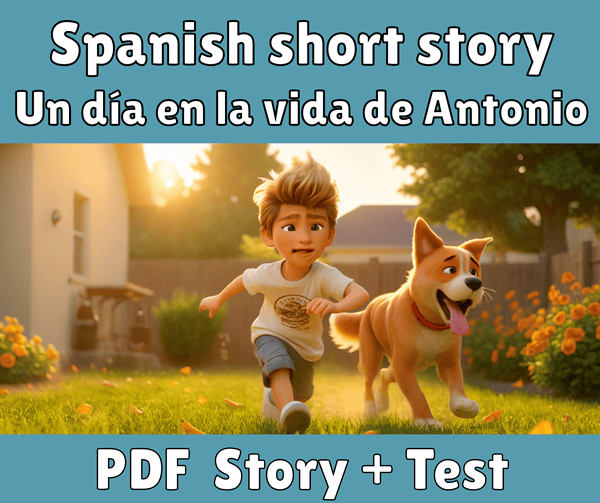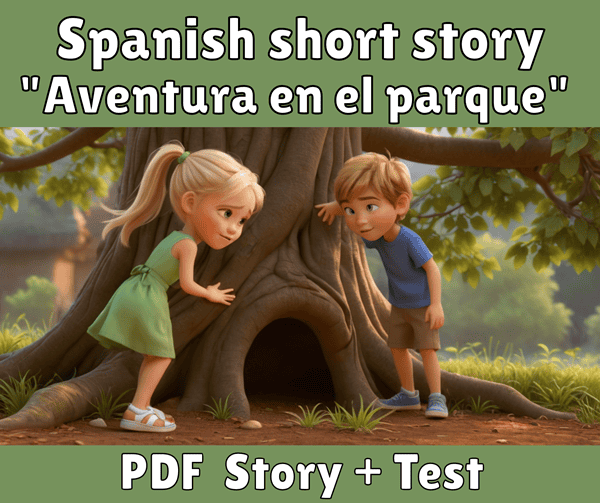One of the best ways to practice Spanish is by reading and listening to simple and relatable stories. Today, we’re introducing a short story about Ana, a young woman living in Barcelona, and her daily routine. This story is perfect for beginners (A1-A2 level) and will help you improve your vocabulary, grammar and listening skills.
This story follows Ana’s daily routine, from the moment she wakes up until she goes to bed. You’ll learn and practice useful vocabulary related to:
- Daily activities like waking up, getting dressed and preparing meals.
- Common places like the park, the office and the supermarket.
- Basic time expressions to describe your own routine.
Each sentence is short, clear and written in simple Spanish, making it easy for beginners to understand.
What’s included?
In this post you will find:
- The video with the story. First in a slow pace, then the bilingual story with English subtitles and voice and finally the story in a normal pace. It’s also included a list of key words and the comprehension test that you will also find in the PDF.
- PDF with the story of Ana’s daily routine. Written in simple Spanish, with images. It’s perfect for reading and practicing pronunciation.
- PDF with a test about the story. Test your comprehension with questions about Ana’s day!
Below you can find the video, the download links and also the text.
Spanish Short Story for beginners: Ana’s routine
La rutina de Ana (Ana’s routine), story and test
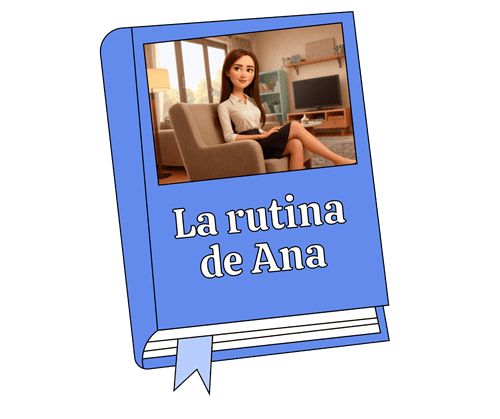
[PDF] La rutina de Ana – Story in Spanish with images
[PDF] La rutina de Ana – Story in Spanish (text in Spanish)
[PDF] La rutina de Ana – Story in Spanish (text in Spanish + bilingual)
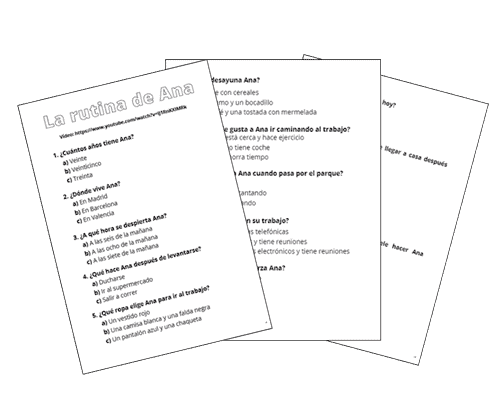
[PDF] Test about ‘La rutina de Ana‘
La rutina de Ana
Esta es Ana. Ella tiene 25 años. Ella vive sola en un apartamento en Barcelona.
Ana se despierta a las siete de la mañana. Después de levantarse, Ana va al baño para ducharse.
Luego va a su dormitorio, abre el armario y elige la ropa para ir al trabajo. Se pone una camisa blanca y una falda negra.
Después, alrededor de las ocho de la mañana, prepara el desayuno. Bebe un café y toma una tostada con mermelada. Mientras desayuna, mira la ciudad por la ventana. A las ocho y media se dirige hacia su trabajo. Le gusta ir caminando porque la oficina sólo está a unos 20 minutos de su casa y así hace ejercicio también. De camino al trabajo pasa por un parque y observa los pájaros cantando.
En la oficina, Ana trabaja en el ordenador. Ella responde correos electrónicos y tiene reuniones con sus compañeros. A las 12:30 ella toma su almuerzo. A veces lleva su comida a la oficina, pero hoy ella ha comido en un restaurante cercano.
Por la tarde, a las 17:00, Ana sale del trabajo. Antes de llegar a casa, pasa por el supermercado y compra algunos productos, como pan y zumo. Ana llega a casa entre las seis y las siete de la tarde. Al llegar prepara una cena deliciosa y saludable.
A las ocho de la tarde, Ana cena un delicioso plato de pasta y ensalada. Después de cenar, Ana suele leer un libro. Le encantan las historias de suspense. A veces también ve una serie en la televisión y otras veces navega por Internet.
Antes de ir a dormir, Ana se lava los dientes en el baño.
A las diez de la noche, Ana se va a dormir. Hoy ha sido un buen día, pero está cansada y necesita descansar.
Why is this story useful for beginners?
This story is useful for beginners for different reasons:
- Real-life context:
This story is based on everyday activities, making it easier to relate to and remember new words and phrases. You’ll learn how to talk about your own daily routine using the vocabulary and expressions used to describe Ana’s routine. - Simple vocabulary and grammar:
The sentences are short and clear, focusing on common verbs like despertarse (to wake up), comer (to eat), and caminar (to walk). The story is mostly written in the present tense, which is one of the first tenses beginners learn. It’s a great way to see how verbs are used naturally and beginners can follow along without feeling overwhelmed. - Listening and reading practice:
If you listen to the story while reading it, you’ll improve both your listening and reading comprehension. Repetition of common phrases will help you feel more confident in understanding and speaking Spanish.
